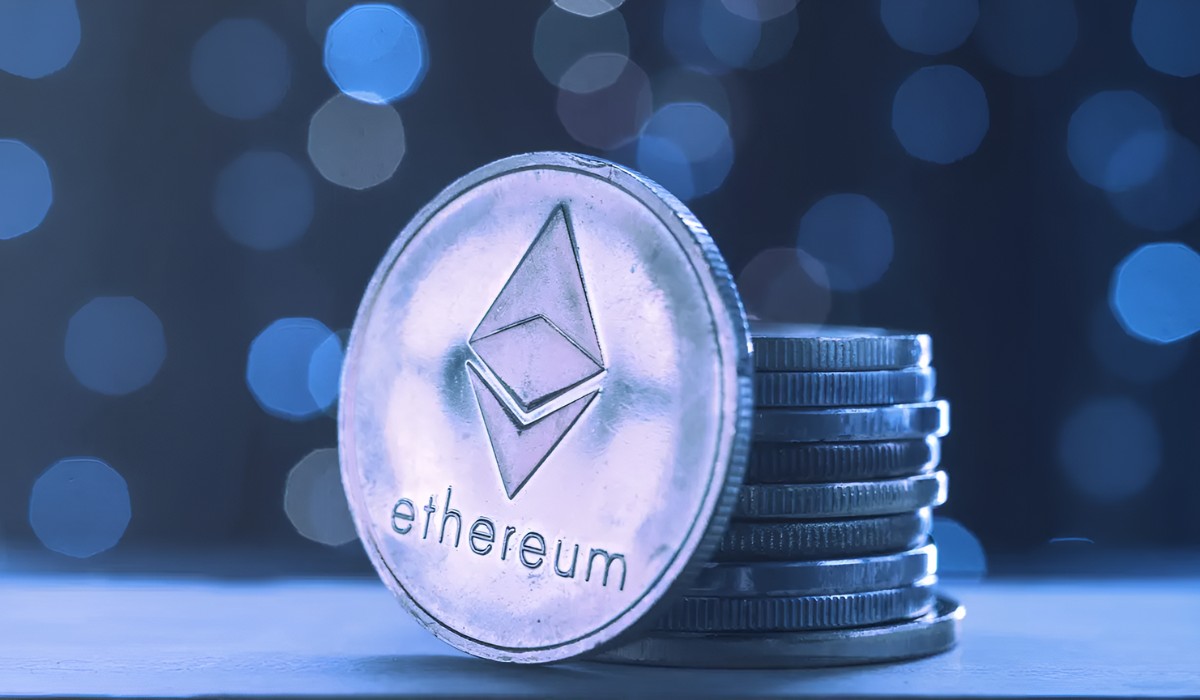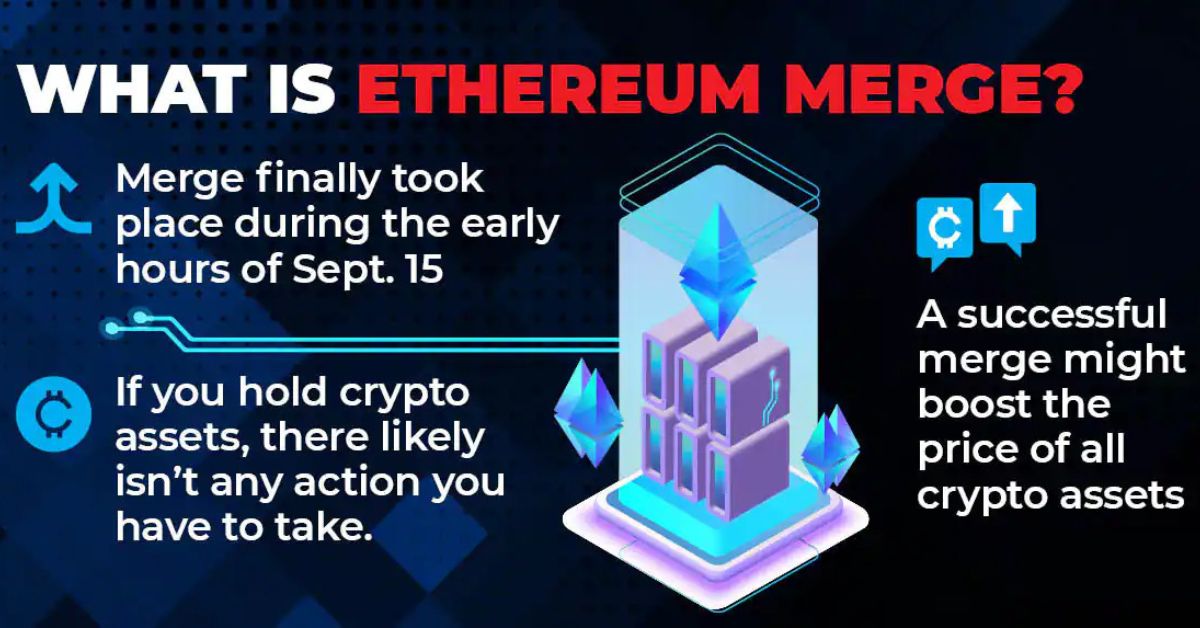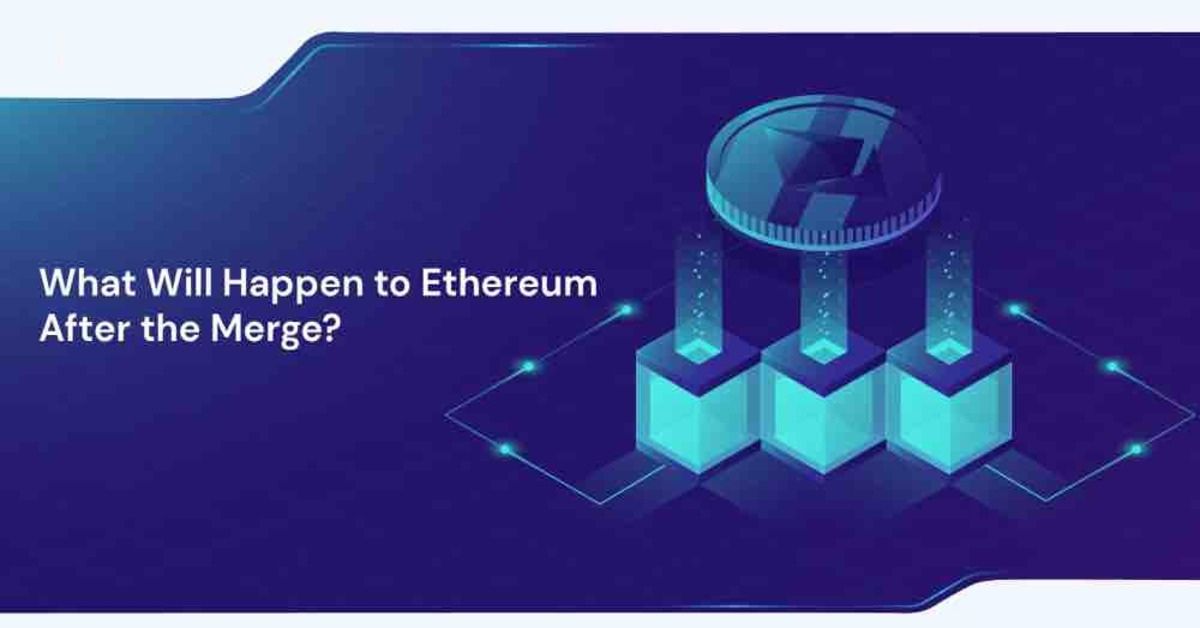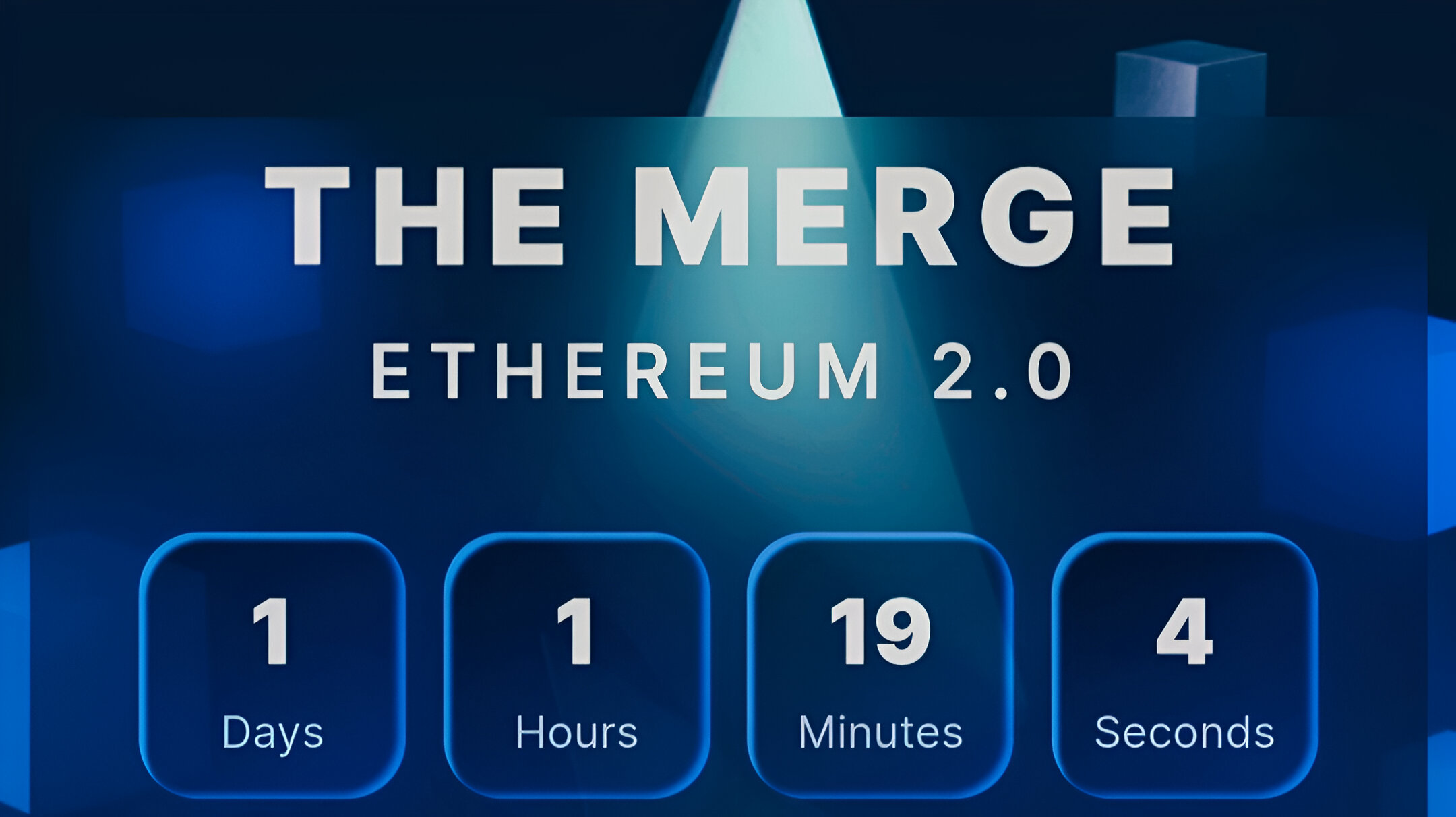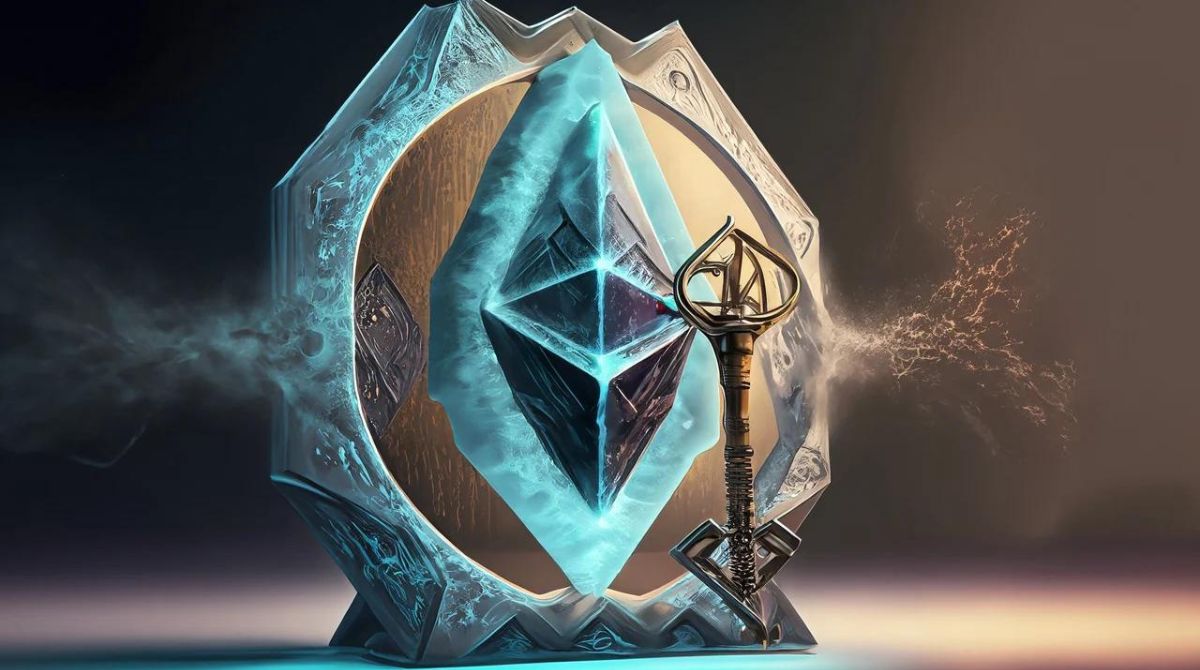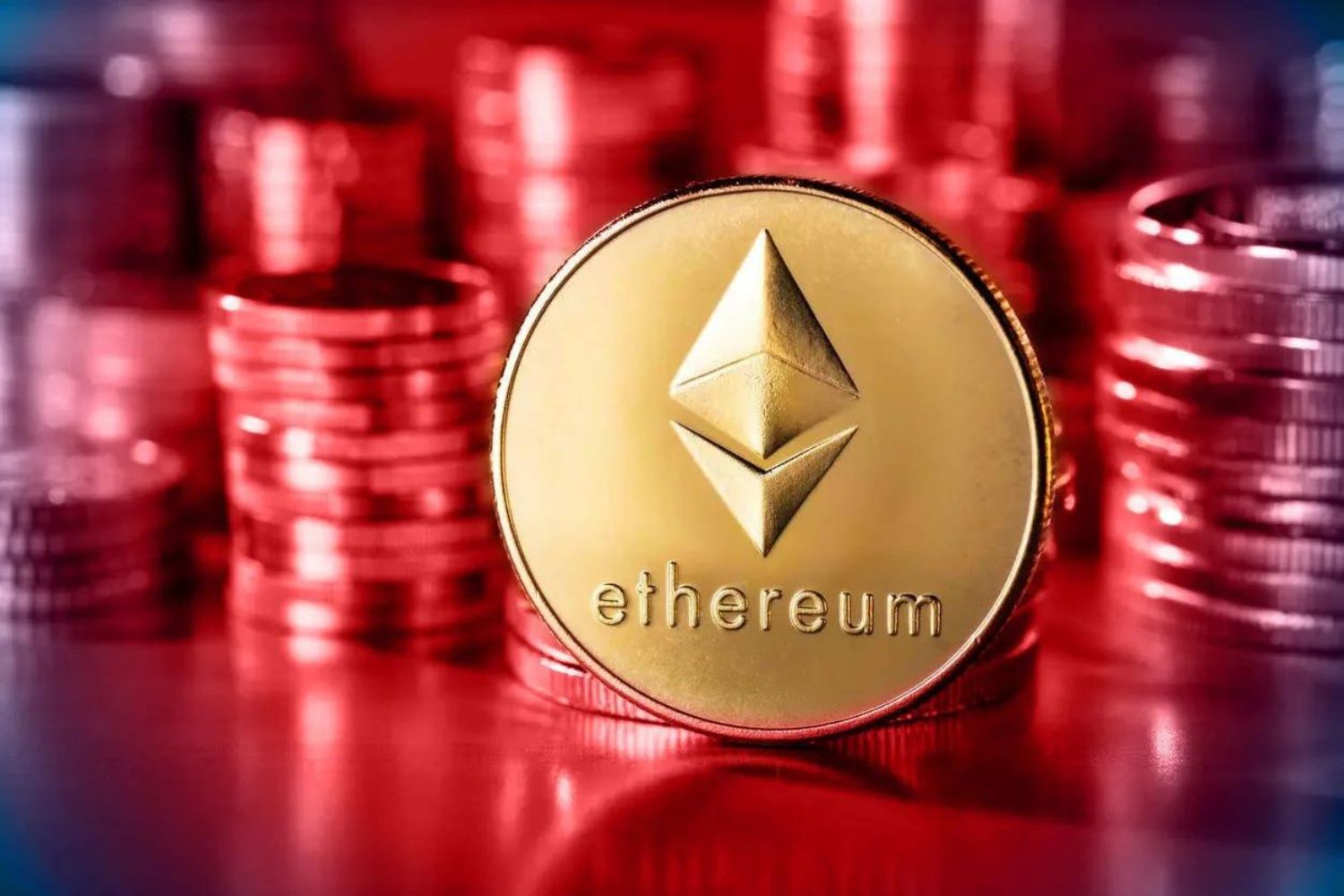Introduction
Welcome to the exciting world of Ethereum! In the ever-evolving landscape of cryptocurrencies, Ethereum has emerged as a prominent player. With its innovative smart contract capabilities, Ethereum has gained significant attention and has become a popular choice among investors, developers, and blockchain enthusiasts.
As Ethereum continues to progress, a major event on the horizon is the highly anticipated Ethereum Merge. This significant upgrade aims to transform the Ethereum network from its current proof-of-work (PoW) consensus mechanism to a more energy-efficient proof-of-stake (PoS) model. The Ethereum Merge holds the potential to bring about notable changes not only in the functionality of the network but also in the value of the Ethereum cryptocurrency.
Before we delve into the potential impact of the Merge on Ethereum’s price, let’s take a brief look at what Ethereum is and how it has gained its prominence in the crypto space.
Ethereum, founded by Vitalik Buterin in 2013, is an open-source, decentralized platform that enables the creation and execution of smart contracts. Smart contracts are self-executing contracts with the terms of the agreement written directly into code, enabling transparent, secure, and tamper-proof transactions without the need for intermediaries.
Since its launch in 2015, Ethereum has generated significant interest and has become the go-to platform for the development of decentralized applications (dApps) and the issuance of new cryptocurrencies through initial coin offerings (ICOs) or token sales.
The Ethereum ecosystem introduced its native cryptocurrency, Ether (ETH), as the fuel for executing smart contracts and powering transactions within the network. Over the years, Ethereum has gained widespread recognition, attracting a wide range of stakeholders, including developers, investors, institutions, and businesses, who believe in its technological potential and the opportunities it offers for innovation.
Now, with the Ethereum Merge on the horizon, let’s explore the potential impact this upgrade could have on the value of Ethereum and what factors might influence its price post-Merge. It’s an exciting time for Ethereum and its investors, as we anticipate the unfolding of a new chapter in its fascinating journey.
What is the Ethereum Merge?
The Ethereum Merge, also known as Ethereum 2.0 or ETH2, is an upcoming upgrade to the Ethereum network that aims to transition it from the existing proof-of-work (PoW) consensus mechanism to a more energy-efficient proof-of-stake (PoS) model. This upgrade is one of the most eagerly anticipated events in the cryptocurrency community, as it promises to bring significant improvements to the scalability, security, and sustainability of the Ethereum network.
Currently, Ethereum relies on PoW, where miners compete to solve complex mathematical puzzles in order to validate transactions and add them to the blockchain. While PoW has proven to be effective, it comes with drawbacks such as high energy consumption and limited scalability. These limitations have become more apparent as the Ethereum network has grown in popularity, leading to issues such as high transaction fees and network congestion.
The Ethereum Merge will introduce a new consensus mechanism called the Beacon Chain, which will facilitate the transition from PoW to PoS. Under the PoS model, validators will be chosen to create new blocks and validate transactions based on the amount of ETH they hold and are willing to “stake” as collateral. This switch to PoS is expected to significantly reduce energy consumption and increase transaction processing capacity.
One of the key components of the Ethereum Merge is the merger of the current Ethereum mainnet with the Beacon Chain. This merger will bring together the existing Ethereum network and the new PoS consensus mechanism into a unified blockchain. This integration aims to provide a seamless transition for Ethereum users and developers, ensuring continuity and compatibility with existing dApps, smart contracts, and Ethereum-based projects.
By implementing the Ethereum Merge, the Ethereum network aims to address major scalability and environmental concerns while continuing to support the growth of decentralized applications and the broader Ethereum ecosystem. This upgrade is expected to not only enhance the performance and efficiency of the network but also contribute to the long-term sustainability and usability of Ethereum as a leading blockchain platform.
The Ethereum Merge represents a major milestone in the evolution of Ethereum and is viewed as a crucial step towards achieving Ethereum’s vision of becoming a scalable, secure, and sustainable blockchain platform. As the Ethereum community eagerly anticipates this upgrade, there is growing excitement about its potential impact on the value of Ethereum and the broader cryptocurrency market.
Background on Ethereum
Ethereum, introduced by Vitalik Buterin in 2013, is a decentralized, open-source blockchain platform that has gained tremendous traction and popularity in the world of cryptocurrencies. It was designed to go beyond the capabilities of Bitcoin by allowing developers to build decentralized applications (dApps) and execute smart contracts on its network.
One of the key features that distinguishes Ethereum from other blockchain platforms is its ability to support programmable smart contracts. Smart contracts are self-executing agreements that run on the Ethereum network and automatically execute predefined actions once certain conditions are met. This technology has opened up a wide range of possibilities for various industries, from finance and supply chain management to gaming and decentralized finance (DeFi).
Ethereum operates on its native cryptocurrency called Ether (ETH), which serves multiple functions within the network. Firstly, Ether acts as a fuel for executing smart contracts and powering transactions on the Ethereum blockchain. Additionally, Ether is used as an incentive for miners to validate transactions and secure the network. Furthermore, Ether has gained recognition as a tradable cryptocurrency, with its value being influenced by market forces and investor demand.
Since its launch in 2015, Ethereum has experienced significant growth and adoption. The Ethereum network has become the go-to platform for developers and entrepreneurs looking to build decentralized applications, as it provides a robust and flexible infrastructure for creating innovative solutions. This has resulted in the emergence of a vibrant ecosystem of dApps and tokens built on top of Ethereum.
One of the standout use cases of Ethereum is its role in enabling decentralized finance (DeFi). DeFi refers to a suite of financial applications and services built on blockchain that aim to provide open, inclusive, and permissionless alternatives to traditional financial intermediaries. Ethereum’s smart contract capabilities have made it the foundation for DeFi protocols, facilitating activities such as lending, borrowing, yield farming, and decentralized exchanges.
In addition to DeFi, Ethereum has also played a significant role in the rise of non-fungible tokens (NFTs). NFTs are unique digital assets that can represent ownership of scarce items such as artwork, collectibles, or virtual real estate. Ethereum’s robust and widely adopted infrastructure has made it the primary blockchain for NFT creation, trading, and ownership verification.
Overall, Ethereum has established itself as a leading blockchain platform, driving innovation in various sectors and capturing the imagination of developers, entrepreneurs, and investors alike. Its programmable smart contracts, vibrant ecosystem, and wide range of use cases have contributed to its ever-growing popularity and have positioned it as a key player in the decentralized revolution.
Potential Impact of the Merge on Ethereum’s Price
The Ethereum Merge, with its transition to a proof-of-stake (PoS) consensus mechanism, has the potential to influence the price of Ethereum (ETH) in several ways. While predicting the exact impact on price is challenging, it is essential to consider the potential factors that could contribute to changes in Ethereum’s value post-Merge.
Increased Scalability: The Ethereum Merge aims to address the scalability concerns of the current proof-of-work (PoW) system by implementing proof-of-stake (PoS). This shift is expected to improve the network’s capacity to process a significantly higher number of transactions per second. With enhanced scalability, Ethereum could attract more users, developers, and businesses, leading to increased demand. Higher demand may exert upward pressure on the price of ETH.
Energy Efficiency: The PoS model, which will be introduced through the Ethereum Merge, significantly reduces the energy consumption associated with mining activities. This transition to a more sustainable and environmentally friendly platform could garner positive attention and support from investors seeking environmentally conscious investments. Such validation may contribute to an increase in demand for ETH, potentially influencing its price.
Network Security and Reliability: PoS consensus provides a unique mechanism for securing the Ethereum network. Validators participating in the PoS system are required to hold a significant amount of ETH as collateral, creating economic incentives for them to act in the best interest of the network. Enhanced security and reliability of the Ethereum network as a result of the Merge may attract more participants and increase confidence in the platform, potentially reflecting positively on the price of ETH.
Market Perception and Sentiment: The successful execution of the Ethereum Merge is likely to generate positive sentiment and confidence in the Ethereum ecosystem. It could be seen as a major technological advancement that solidifies Ethereum’s position as a leading blockchain platform. Positive market sentiment can influence investor sentiment, potentially leading to increased demand and a subsequent rise in ETH’s price.
Integration and Compatibility: The Ethereum Merge aims to seamlessly integrate the existing Ethereum mainnet with the new Beacon Chain and PoS mechanism. This compatibility ensures that existing dApps, projects, and smart contracts built on the Ethereum network can continue their operations without disruption. The seamless transition and continued support for existing projects may instill confidence and drive further adoption, potentially having a positive impact on ETH’s price.
General Cryptocurrency Market Trends: While specific to Ethereum, the price of ETH is also influenced by broader trends and market sentiment within the overall cryptocurrency market. Factors such as regulatory developments, market adoption, investor sentiment, and macroeconomic conditions can impact the value of ETH, irrespective of the Ethereum Merge. It is important to consider these external factors in conjunction with the Ethereum-specific impact of the Merge.
It is important to note that the cryptocurrency market and ETH’s price are influenced by various variables, and forecasting the exact impact of the Ethereum Merge on ETH’s price is challenging. The potential consequences discussed above are speculative and should be considered within the broader context of market dynamics and investor sentiment. As with any investment, thorough research, and careful evaluation of risk factors is advised.
Factors Influencing Ethereum’s Value Post-Merge
The transition to proof-of-stake (PoS) through the Ethereum Merge is expected to have a significant impact on the value of Ethereum (ETH). Several factors can influence ETH’s value in the post-Merge era, including:
Network Security and Stability: The successful implementation of PoS and the elimination of mining activities will likely enhance the security and stability of the Ethereum network. A more secure and reliable network may attract more users, developers, and investors, which could positively influence the value of ETH.
Scalability and Transaction Throughput: The Ethereum Merge aims to enhance the scalability of the network by significantly increasing transaction throughput. This enhanced capacity can accommodate the growing demand from users, developers, and applications. Improved scalability could attract more projects, increase usage, and potentially lead to an increase in the value of ETH.
Economic Incentives for Validators: Validators play a crucial role in the PoS consensus mechanism. These validators are required to hold a certain amount of ETH as collateral, and are rewarded with transaction fees and block rewards for securing the network. The economic incentives provided to validators may impact the overall market demand for ETH and consequently its price.
Market Demand for Decentralized Applications (dApps): Ethereum’s ecosystem is known for its extensive array of decentralized applications (dApps) and protocols. The Ethereum Merge could attract more developers and projects to build on the network, leading to an increased demand for ETH. The growth in dApps and usage could positively impact ETH’s value.
Investor Sentiment and Market Adoption: Market sentiment plays a crucial role in determining the value of cryptocurrencies. A positive sentiment towards the Ethereum ecosystem and its upgrades, such as the Merge, could lead to increased investor interest and demand for ETH. Conversely, negative sentiment or skepticism could have a detrimental effect on ETH’s value.
Regulatory Environment and Government Policies: The regulatory landscape surrounding cryptocurrencies, including ETH, can have a significant impact on their value. Favorable regulations that promote adoption and use of cryptocurrencies may positively influence the value of ETH. Conversely, restrictive policies or regulatory uncertainty could create negative sentiment and dampen demand for ETH.
Competition from Other Blockchain Platforms: Ethereum faces competition from other blockchain platforms offering similar functionalities or catering to specific use cases. The extent to which Ethereum maintains its position as a leading platform for dApps, DeFi, and NFTs post-Merge could impact the demand and value of ETH.
Market Volatility and Investor Speculation: Cryptocurrency markets are known for their volatility. Market dynamics, investor speculation, and short-term trading activities can significantly influence the value of ETH. It is important to consider the potential impact of market volatility and speculative behavior on ETH’s price post-Merge.
While these factors provide insights into the potential influences on ETH’s value post-Merge, it is important to note that the cryptocurrency market is inherently dynamic and multifaceted. The interplay between these factors, alongside broader market trends and sentiments, will shape the value of ETH in the post-Merge era.
Expert Opinions and Price Predictions for Ethereum
As the Ethereum Merge garners attention and anticipation, experts and analysts have shared their opinions and price predictions for Ethereum (ETH) in the post-Merge era. While it is important to approach these predictions with caution, they can provide insights into the market sentiment and potential expectations surrounding ETH’s value. Here are some expert opinions and price predictions:
1. Bloomberg Intelligence: Analysts at Bloomberg Intelligence have expressed a positive long-term outlook for Ethereum. They believe that the transition to proof-of-stake (PoS) will reduce carbon emissions and make the Ethereum network more efficient, potentially driving increased adoption. They predict that ETH’s value could reach $5,000 in the future.
2. Simon Dedic, Managing Partner at Moonrock Capital: Dedic has projected a bullish outlook for Ethereum, stating that the price of ETH could potentially reach $10,000 within the next few years. He emphasizes Ethereum’s dominance as the platform for decentralized applications (dApps) and highlights the potential growth in the DeFi and NFT sectors as key drivers for ETH’s value.
3. Raoul Pal, Founder and CEO of Real Vision: Pal has described Ethereum as a “supermassive black hole” and believes that its value could outperform Bitcoin in the long term. He predicts a price target range of $20,000 to $40,000 for ETH.
4. Michaël van de Poppe, Cryptocurrency Analyst and Trader: Van de Poppe has expressed a cautious but optimistic view on Ethereum’s price post-Merge. He believes that the transition to PoS and the increased scalability of the network could positively impact ETH’s value. He suggests that if Ethereum can maintain above key support levels, it could potentially rise to $4,000 to $4,800 in the future.
5. Crypto Research Report: The Crypto Research Report suggests that Ethereum could reach a price target of $3,500 by the end of 2021 and potentially reach $10,000 within five years. They highlight Ethereum’s strong network effects, the growing adoption of decentralized finance (DeFi), and the potential for Ethereum to capture a significant portion of the global financial market.
It is important to note that these predictions are not guarantees and should be taken as speculative opinions. The cryptocurrency market is highly volatile and subject to various external factors, making accurate price predictions challenging. Market sentiment, technological developments, regulatory changes, and global macroeconomic conditions can all influence the value of Ethereum and should be considered alongside expert opinions.
Investors and participants in the Ethereum ecosystem should conduct thorough research, stay informed about market trends, and assess risks before making any investment decisions. As with any investment, it is recommended to seek professional advice and diversify one’s portfolio based on individual circumstances and risk tolerance.
Potential Risks and Challenges for Ethereum’s Price Post-Merge
While the Ethereum Merge holds significant potential for the price of Ethereum (ETH), there are several risks and challenges that could impact its value in the post-Merge era. It is essential to consider these factors when evaluating the future outlook of ETH:
Transition Challenges: The transition from proof-of-work (PoW) to proof-of-stake (PoS) is a complex process that requires careful planning and execution. Any technical issues or delays in implementing the Ethereum Merge could impact market confidence and investor sentiment, potentially resulting in short-term price volatility for ETH.
Market Competition: Ethereum faces competition from other blockchain platforms that offer similar functionalities and cater to specific use cases. Rival platforms that can scale effectively, offer lower transaction fees, or provide unique features may divert user and developer attention away from Ethereum. Increased competition could impact the demand and value of ETH.
Regulatory Constraints: The regulatory landscape surrounding cryptocurrencies remains uncertain and evolving. Potential regulatory restrictions or unfavorable policies imposed by governments could impact the adoption and use of Ethereum. Regulatory challenges may create investor uncertainty, affecting the value of ETH in the post-Merge era.
Scalability Limitations: While the Ethereum Merge aims to enhance scalability, it is important to consider that additional scalability solutions may still be required to meet the growing demand for Ethereum. If the scalability challenges persist or are not adequately addressed, it could hinder Ethereum’s ability to handle increased network activity and impact its value.
Technological Advancements: The blockchain and cryptocurrency space is rapidly evolving, with new technological advancements and innovations emerging regularly. If Ethereum fails to stay at the forefront of technological developments, it could become less competitive, potentially impacting demand for ETH and its price.
Economic Factors: Economic conditions and broader financial market trends can influence the value of cryptocurrencies, including Ethereum. Factors such as inflation, economic recessions, or shifts in investor sentiment can impact market demand and investor decisions, influencing the value of ETH in the post-Merge era.
Volatility and Market Sentiment: Cryptocurrency markets are known for their volatility, and Ethereum is no exception. Fluctuations in market sentiment, speculative trading activities, or unpredicted events can lead to price volatility for ETH. Traders and investors should be prepared for potential market swings and price fluctuations.
It is important to remember that cryptocurrency investments come with inherent risks. These risks are inherent in the nascent and evolving nature of the industry. Before making any investment decisions, individuals should conduct thorough research, consider their risk tolerance, and seek professional advice.
While the Ethereum Merge holds great potential for the future of Ethereum, it is crucial to remain informed about the potential risks and challenges that may impact the price of ETH in the post-Merge era.
Conclusion
The upcoming Ethereum Merge represents a significant milestone for the Ethereum network and holds the potential to impact the value of Ethereum (ETH). The transition from proof-of-work (PoW) to proof-of-stake (PoS) consensus mechanism brings with it numerous possibilities and challenges that investors, developers, and the broader cryptocurrency community must consider.
Ethereum has established itself as a leading blockchain platform, enabling the creation of decentralized applications (dApps) and executing smart contracts. The Merge aims to enhance Ethereum’s scalability, energy efficiency, security, and overall sustainability. These improvements could attract more users, developers, and businesses to the platform, potentially increasing the demand and value of ETH.
However, the post-Merge era also poses potential risks and challenges. Transition challenges, competition from other blockchain platforms, regulatory constraints, scalability limitations, technological advancements, economic factors, and market sentiment can impact the value of ETH. It is crucial to remain aware of these factors and stay informed to make informed decisions about investing in Ethereum.
Price predictions and expert opinions provide insights into the market sentiment surrounding ETH. However, it is essential to approach these predictions with caution, as the cryptocurrency market is highly volatile and influenced by various external factors.
Ultimately, the future price of Ethereum in the post-Merge era will depend on a complex interplay of market dynamics, technological advancements, regulatory developments, and investor sentiment. Engaging in thorough research, diversifying investments, and seeking professional advice can help navigate the risks and opportunities presented by the Ethereum Merge and make well-informed decisions.
As Ethereum continues to evolve and the Merge unfolds, the excitement and anticipation in the Ethereum community are palpable. Without a doubt, the Ethereum Merge marks a crucial step towards a more scalable, secure, and sustainable future for Ethereum and the wider world of decentralized applications and blockchain technology.
Investors, developers, and enthusiasts are eagerly watching the progress of the Ethereum Merge, with the hope that it will unleash a new era of innovation, growth, and potential for Ethereum and its native cryptocurrency, ETH.







